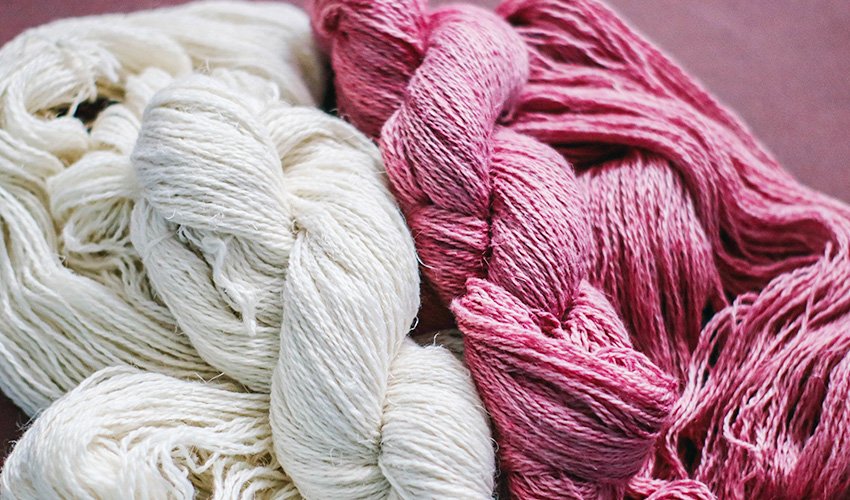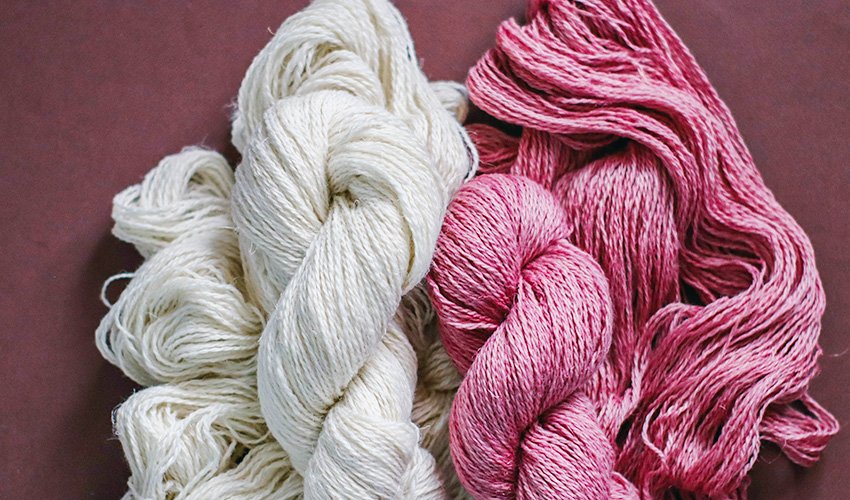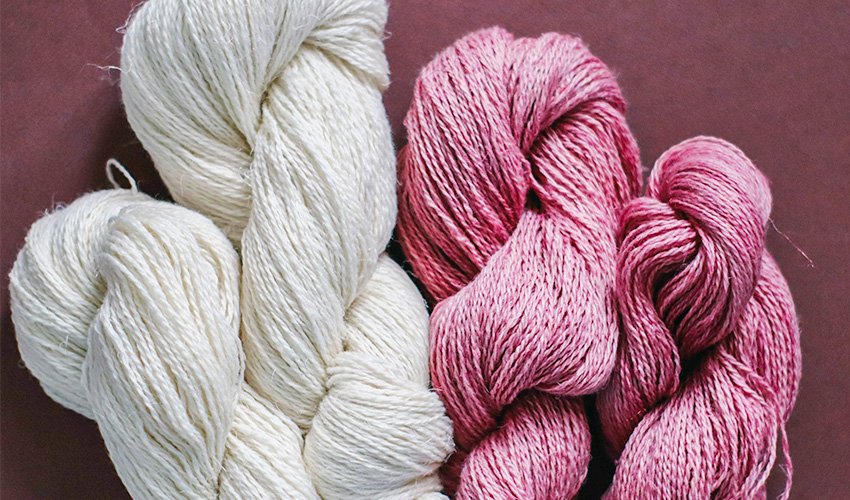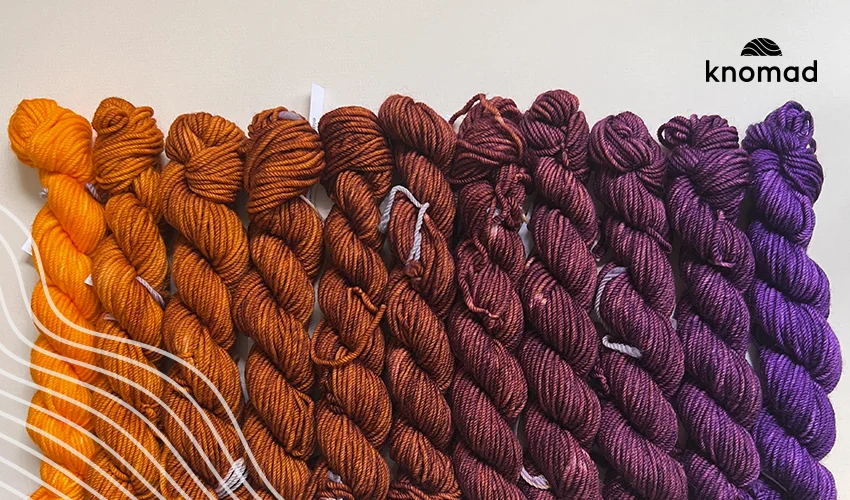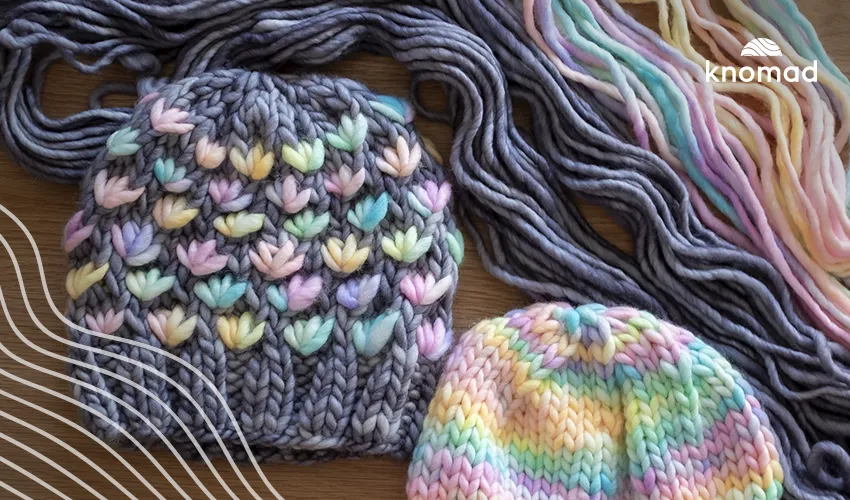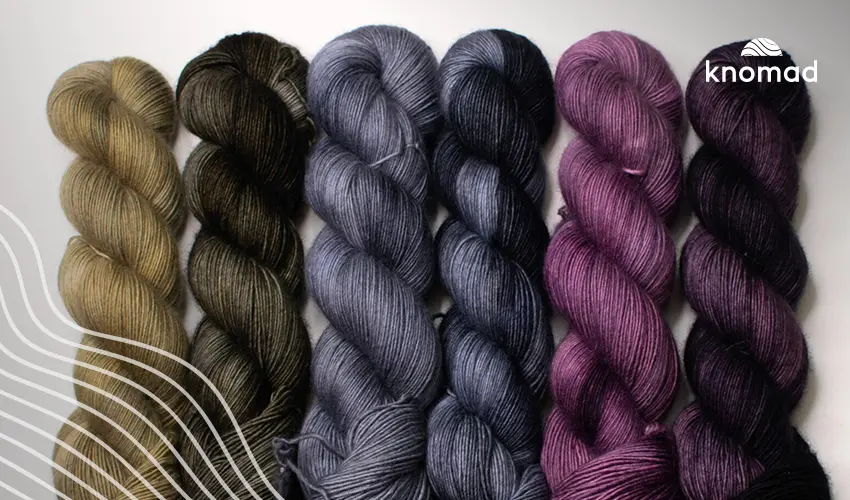Natural Dyes for Wool: Lac
When looking at my shelf of undyed wool ready for color, I get excited about all the possibilities the natural world offers me! As a natural dyer, most of what I like to use in my everyday practice is foraged locally, from my garden, nearby fields, the side of the road, or my neighbor’s yards! People in my area are beginning to recognize me when I stop in and ask local businesses for avocado pits and peels, or request that they save me their red onion skins.
While I love working with these elements close and accessible (and often free) to me, sometimes there are colors that can only be achieved by using some of the globe’s ancient, sought-after dyes. These dyes were pillars beneath the rise and fall of empires: purples and reds that cultures went to battle for and prized more than gold. Now, we’re able to get a lot of them through the mail, simply by placing an order!
One surprising source of natural dye is a tiny insect: a little scale bug that feeds on specific plants. In Central America, we have a variety of this insect called cochineal. In Asia, this insect is called ‘lac’ and comes from Laccifer lacca. Both insects produce pretty similar shades of vivid pink that had kings, queens, emperors, and rulers clamoring to be in control of the supply chain for the dye. Lac and cochineal insects are small, flat bugs–smaller than a ladybug. They are a sort of silvery-grey, but when you crush the bug, it releases a bright, vivid red-pink. For dye, these insects are scraped off of the plants they eat, then dried and sometimes powdered. For my dye experiments, I am using powdered Lac.
How to Naturally Dye Wool with Lac
Materials
For this dye experiment, you’ll want the following materials on hand. Remember, anything you use for natural dyeing must not be used again for food or food prep at any time, and you’ll want to store it separately to avoid any cross-contamination.
- 1 large stainless steel or aluminum soup pot or stockpot
This should be big enough to hold 1-2, 100 g skeins of yarn, covered in water, and fully submerged with room to move around.
- Dedicated tools: measuring cup, spoon for stirring
- A heat source
This could be your at-home stove with good ventilation, a hot plate, a propane burner, or even a crockpot. If you’d like to use an upcycled crockpot, you will not need the stockpot, but it will need to stay fully dedicated to natural dyeing as dyes are not food safe.
- A water source
Natural dyes do use a lot of water–for prepping your fibres, creating dye baths, and rinsing finished yarns. You can use rainwater if you like, especially if you find your tap water is influencing your colors negatively. You can test your water’s pH with strips and see how ‘neutral’ it is if you like.
- A respirator or face mask
I typically would not use a respirator or face mask when moving around larger dye goods like flowers or leaves, but if you are using anything powdered–the chemicals we use to mordant, or any powdered dyes–I recommend having one on. These ultra-small particles just aren’t good to breathe in!
- A scale that can measure grams in small quantities
If you already have a baking scale, you can use it here, just make sure not to let any dyes or materials touch the scale directly. Simply use the tare function to zero-out the weight of any vessels you’re using to measure, then clean off your scale thoroughly after use.
- Aluminium sulfate or Aluminium Potassium Sulfate*
Mordants are chemicals that bind to both the fibre and color, acting as a bridge to attach color molecules to your wool. This chemical is the safest of a handful of options and is popular with many natural dyers. It will only bind color to protein fibres, not cellulose ones–so color taken by the wool may not be taken up the same way by any blended fibres (like cotton, hemp, linen or nylon).
- Cream of Tartar*
Cream of Tartar adds a little softness back into your bath and prevents your wool from feeling too crunchy at the end of the dyeing process.
- Lac powder
I’ve used a pre-prepared, ultra-fine powder for this experiment. Depending on the year, the age, and the source of your powders, some colors may appear differently.
- 2 skeins of Knomad Bristle
For this dye experiment, I am using Knomad Bristle, a 70% Fine Organic Merino Wool blended with 30% hemp. Hemp might retain some dye, but because it is a cellulose fibre, and we are mordanting for protein fibres, any color retention is not reliable. This will result in a softly heathered yarn!
- Old clothes
Lac stains your hands and your clothes hot pink, so be careful!
- Gloves
Rubber gloves or kitchen gloves, which can be re-used multiple times, are my preference here. While most natural dyes are perfectly safe to handle with your hands, you’ll be washing, rinsing, and in and out of water a lot, which can damage your nails and cuticles. Keep those knitting hands pretty and get some gloves.
*These items have been pre-calculated in the amount you need for this project, dyeing 200 g of wool, however, you’ll need to do your own calculations using the mordanting guide below.
Step 1: Prep your fibre. Knomad pre-scours and washes their yarns before shipping them to us, so there should be no need to heavily clean the fibres–simply remove the tags, leaving all the ties, and open the hank into a big loop. Add reinforcement ties if you feel they’re necessary, and soak the fibre in warm water for an hour to get it fully saturated (typically 1 hour).
Step 2: Measure the alum. Wearing a respirator or face mask, measure out 12% of your weight of fibre (WOF) in alum sulfate. Here’s the math for our experiment:
200 x 0.12 = 24 g of aluminum sulfate
Hot tip: weigh out how much alum is in a tablespoon (dedicated tablespoon) and then calculate moving forward about how many tablespoons you’ll need to simplify future measuring.
Step 3: Add hot water to your alum in a small mixing container. I like to use empty, recycle-ready plastic containers. Stir the alum and water mixture until the alum is fully dissolved and the water looks cloudy or clear but has no visible grains in the bottom of the container. Measure out 1 tbsp of Cream of Tartar and dissolve it into the water while it’s still warm.
Step 4: Transfer your mordanting solution to a larger stockpot, and fill with enough water to cover your skeins of yarn (don’t add them until the pot has all the water in it). Stir and then add your yarn, moving it around to let it fully absorb the mordanting solution. Set on low heat and simmer (do not boil) for 1 hour. Allow to cool overnight with the yarn in the solution.
Step 5: Prepare your dye good solution.
Measure out 1 tsp of your dye powder per 100 g of fibre and see how you like the results. Often, these powdered dyes are a bit more potent and require less dye to fibre in the ratio. Powders should be prepared with smaller quantities of water and left overnight to more thoroughly mix, or these dyes have a tendency to separate and make one part of your project darker than the other (or have little speckles, which can be cool, if that’s what you wanted). I mix powdered dyes up in a bottle with a well-sealing lid, fill the bottle halfway with water and shake a few times over the course of the day. Leave it overnight in the bottle.
Step 6: Prepare the yarn. Drain the water from your yarn soak, and push a little of the extra retained water out with your fingers. Not too much–liquid being held by the fibre will help draw the dye into the yarn, so we don’t want to take it all out and risk too much splotchiness in the final fibre.
Step 7: Prepare the dye bath. Wash the pot out to make sure no mordant remains (it will grab your dye instead of the yarn and dye your pot slightly pink). Add water until you have enough to cover both skeins of yarn and allow them to move freely. Add your dye solution, stirring to distribute it as well as possible through the water.
Step 8: Add your yarns gently to the dye bath, making sure that yarn has enough room to move around but is mostly submerged in the pot. If you need more water, it’s okay to add some here.
Place your pot on the heat source of your choice and increase the temperature gradually to a heat just under simmering. If you have a thermometer, you’re going to first lift the temperature to 90 F (32 C), stir, and then lift the temperature again to 180 F (82 C). I don’t have a thermometer, so I just eyeball it, and that’s okay too. You want the water hot enough for steam to be rising off it, but not so hot that it’s bubbling, boiling, or moving your yarn around for you. Keep the dye bath at this temperature for an hour, stirring occasionally to move the fibres around and keep them from collecting dye only on one side. After an hour, turn the heat off and let it cool.
Step 9: Lift a bit of your yarn from the pot with a spoon and evaluate the color–remember, it will typically be 1-2 shades lighter than what you see on the wet fibre. If you like the color as-is, remove the yarn from the pot and move to the next step. If you would like to see the color deepen or strengthen a bit, leave it in the pot overnight, stirring one more time before you go to bed.
Step 10: Remove your yarns from the dye bath and smoosh out some of the extra dye–set the wool aside. Fill a sink, basin, or bucket with room temperature water and add your yarn, moving it around with your hands to allow dye release. When the water is dark, drain it and do this step again. Rinse until the water is mostly clear to ensure that no dye particles will transfer to hands or clothing while working with the finished yarns. If you want, you can add a little bit of wool wash to one of these rinse baths to improve the softness and scent of your finished yarn.
Step 8: Hang your hanks of yarn to dry out of the direct sun (I like to use a portable hanging rack in the bathtub). They will drip a little bit, so if you need to dry them indoors, I suggest putting them in a bathtub or in a room with a drain (like a basement). Depending on your humidity and weather, it can take 1-2 days for yarn to fully dry, but maneuvering it so that the same part of the hank is not always hanging down can help move this process along a bit.
I hope you feel empowered to try some hot pinks on your own! You can re-use the Lac bath a few times to get different shades of pink, make your own gradient, and more. These instructions would also work well for any other powdered dye extract.
Tags: bristle, Hand dyers, Natural dyes

